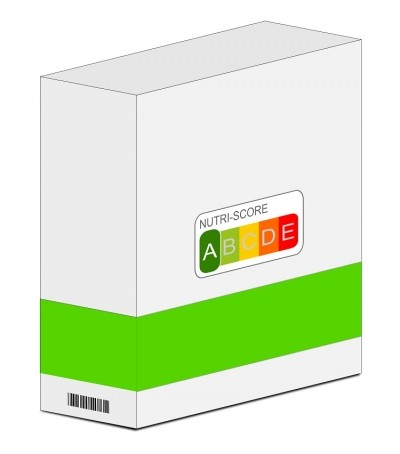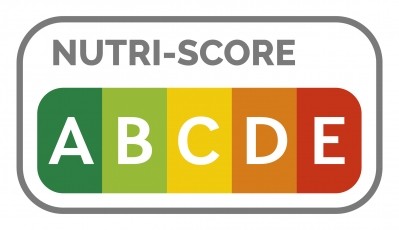How does Nutri-Score impact shoppers’ purchase intentions?

Researchers at Ghent University in Belgium have undertaken two studies to investigate the impact of of Nutri-Score and its five categories (A, B, C, D and E) on consumers’ perceived healthiness perceptions and purchase intentions.
What is Nutri-Score?
The labelling scheme was first developed in France in 2017. Since that time, Nutri-Score has been officially recommended in several European countries, including France, Belgium, and Spain, to address rising obesity rates. The scheme has also been trialled by food brands such as PepsiCo, the Kellogg Company, and Nestlé.
The scheme ranks food from -15 for the ‘healthiest’ product to +50 for those that are ‘less healthy’. On the bases on this score, the product receives a letter with a corresponding colour code: from dark green (A) to dark red (F).
Despite rumours Nutri-Score was to become mandatory across the bloc, the labelling scheme remains mandatory. In April this year, the European Commission surprised many by failing to enforce mandatory implementation in its Farm to Fork strategy. Rather, the Commission plans to propose a harmonised mandatory front-of-pack (FOP) nutrition label by Q4 2022.
Does the label help consumers identify ‘healthy’ products?
Under instruction from the Belgium-based researchers, consumers in the EU took part in two online experiments. They were asked to rate products from different categories, with or without Nutri-Scores, in terms of their perceived healthiness and purchase intentions.
Findings indicated that the presence of Nutri-Score did help the respondents assess the healthiness of products more easily.
According to the researchers, this means that the first objective of Nutri-Score – to make respondents more aware of product healthiness – has been achieved: “Respondents identified healthy products as healthier when the Nutri-Score is present,” they noted. “In addition, they regarded the healthiness of products ranked in five categories significantly differently.”
Respondents were also able to distinguish between the different colours, such as between dark green (A) and light green (B), as well as between orange (D) from red (E), in terms of their perceived healthiness.
“In this respect, our findings are promising regarding the effectiveness of the Nutri-Score, which was designed explicitly to support more nuanced, accurate assessments of products’ healthiness and to avoid dichotomous thinking,” they wrote.
What about purchase intentions?
Findings also revealed that respondents expressed ‘higher purchase intentions’ for food products carrying the ‘healthier’ scores A and B, compared to the ‘less healthy’ D and E.
They also expressed higher purchase intentions for healthy products carrying Nutri-Score, rather than those without it.
However, the researchers noted, the same could not be said of unhealthy products: average purchase intentions for these foods were identical, whether the label was present or not. This suggests that Nutri-Score ‘has the potential to boost sales of healthy products’, said the researchers, while at the same time not affecting sales of unhealthy products.
“This interesting finding may mitigate fears among food industry actors that the Nutri-Score would have negative impacts on the sales of red-labelled products,” they noted in the study.
Indeed, the Belgian food industry has argued that Nutri-Score is too ‘stigmatising’ for some unhealthy export products, such as chocolate, the researchers continued. In Italy, too, the label has been criticised for posing a risk to Italian-made products and for being exclusionary of foods such as extra virgin olive oil and Italian specialties Parma ham, Parmigiano Reggiano, and Grana Padano.
“Our results suggest the food industry does not need to worry about sales of [products such as ‘unhealthy’ chocolate], even if they feature the Nutri-Score,” wrote the researchers.
However, they did stress that respondents were ‘more willing’ to purchase products marked with A or B ratings, rather than D and E, due to their perceived healthiness. “In this sense, the Nutri-Score appears to be achieving another of its objectives, namely, to steer consumers toward healthier purchases.”
Researchers push for mandatory implementation
According to the researchers, the limited, voluntary implementation of Nutri-Score in Europe is preventing consumers from ‘making accurate comparisons’ across food products.
With findings indicating that shoppers do make healthier food choices when the label is present, they concluded that ‘its mandatory implementation for all food products in Europe seems appropriate’. They suggested that enforced implementation could have beneficial consequences for retailers, manufacturers, consumers, nutritionists, and public policymakers.
“We hope these findings contribute to greater conviction among all stakeholders to introduce the Nutri-Score as the only European FOP nutrition label and an effective option for addressing the growing obesity epidemic.”
Source: Appetite
‘The Impact of the Nutri-Score Nutrition Label on Perceived Healthiness and Purchase Intentions’
Available online 15 October 2020
DOI: https://doi.org/10.1016/j.appet.2020.104995
Authors: Joyce De Temmerman, Eva Heeremans, Hendrik Slabbinck, and Iris Vermeir.




























